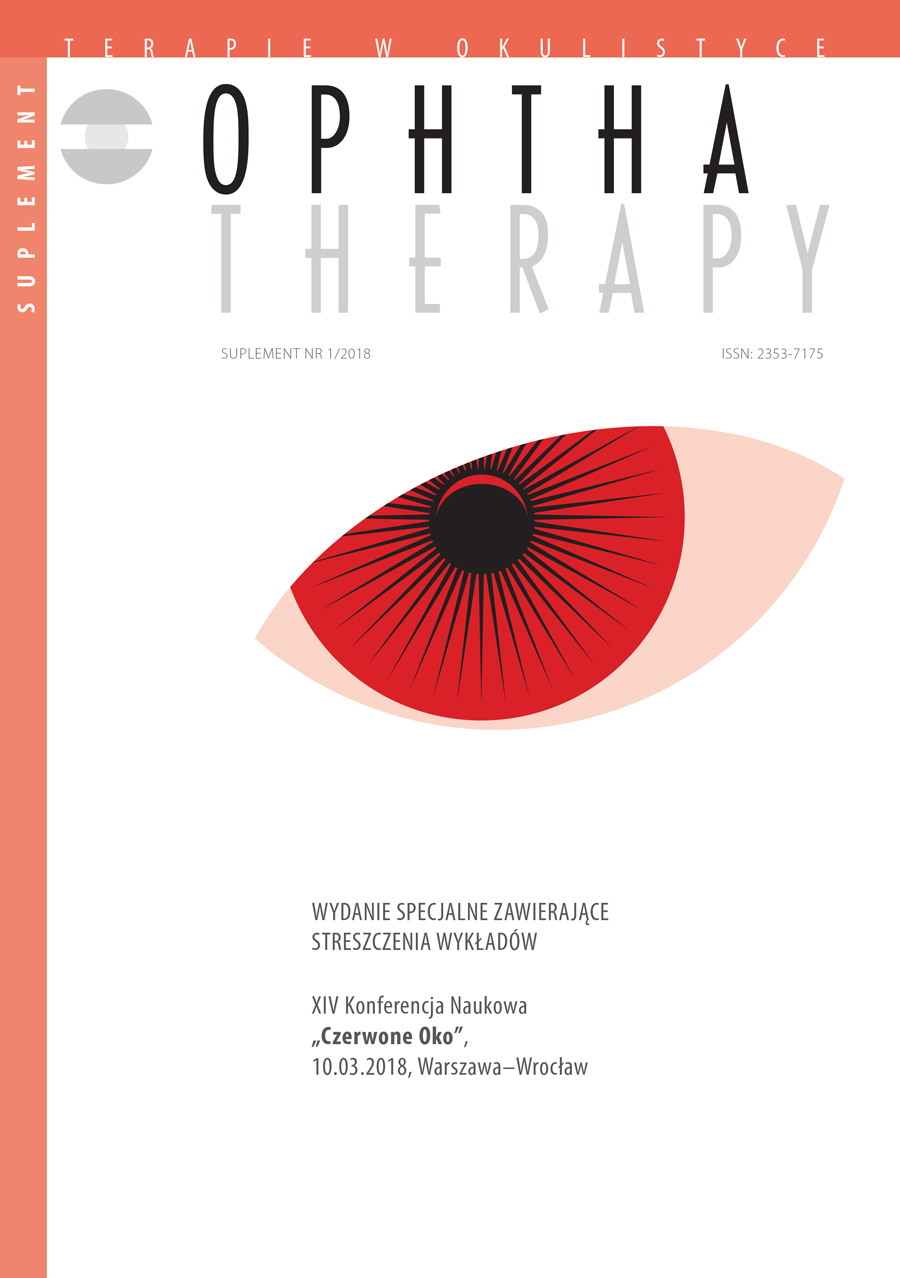Other parasite diseases of anterior segment of the eye
Main Article Content
Abstract
Exotic tourism provides us with a lot of fun, but it can also be associated with serious eye complications. Parasites develop in the body for many months or even years before they cause specific symptoms of infection. Inflammation of the anterior segment may be associated with the consumption of contaminated food, bite by an infected insect or direct contact of the irritated eye with the parasite. Complications with parasites from the anterior segment of the eye include: orbital tissue inflammation (sometimes with the feeling of a foreign body resulting from the presence of a mature parasite), keratitis, hyperemia, pruritus and conjunctivitis, presence of a parasite under the conjunctiva or in the anterior chamber, uveitis, hypopyon, hyphema and iris atrophy. In differential diagnosis of clinically atypical anterior segment infection, parasite infections should be considered, even in the case where the patient was not in endemic areas, parasite infestation may occurr as a result of contact with the vector released after air or sea transport.
Downloads
Article Details

This work is licensed under a Creative Commons Attribution-NonCommercial-NoDerivatives 4.0 International License.
Copyright: © Medical Education sp. z o.o. License allowing third parties to copy and redistribute the material in any medium or format and to remix, transform, and build upon the material, provided the original work is properly cited and states its license.
Address reprint requests to: Medical Education, Marcin Kuźma (marcin.kuzma@mededu.pl)
References
2. Das D, Ramachandra V, Islam S et al. Update on pathology of ocular parasitic disease. Indian J Ophthalmol. 2016; 64: 794-802.
3. Zagórski Z, Naumann GOH, Watson P. Choroby rogówki, twardówki i powierzchni oka. Wyd. 1. Czelej, Lublin 2008: 241-5.
4. Nimir AR, Saliem A, Aziz IA. Review article Ophthalmic Parasitosis: A Review Article. Interdiscip Perspect Infect Disease. 2012: 12.
5. Rosenblatt JE. Antiparasitic agents. Mayo Clin Proc. 1999; 74(11): 1161-75.
6. Chandra A. A Live Cysticercosis in Anterior Chamber Leading to Glaucoma Secondary to Pupilary Block. J Glaucoma. 2007; 16: 271-3.
7. Kosik-Bogacka D, Czepita D, Łanocha N. Pełzaki z rodzaju Acanthamoeba jako czynnik etiologiczny zapalenia rogówki oka. Klin Oczna. 2010: 4-6.
8. Zhang X, Sun X, Jiang C et al. A new in vivo confocal microscopy prognostic factor in Acanthamoeba keratitis. J Fr Ophtalmol. 2014; 37(2): 130-7.
9. Prost ME, Jachowicz R, Nowak JZ (ed). Kliniczna farmakologia okulistyczna. Wyd. 2. Elsevier Urban & Partner, Wrocław 2016: 194.
10. Cupp EW, Sauerbrey M, Richards F. Elimination of human onchocerciasis: history of progress and current feasibility using ivermectin (Mectizan(®)) monotherapy. Acta Trop. 2011; 120(suppl 1): 100-8.
11. Genchi C, Kramer L. Subcutaneous dirofilariosis (Dirofilaria repens): an infection spreading throughout the old world. Parasit Vectors. 2017; 10(2): 517.

